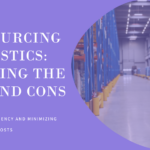You’ve probably heard the saying, “You never get a second chance to make a first impression.” Now, picture this—you walk into a store, and the lighting is too bright, the colors clash, and there’s no clear organization of products. Feeling overwhelmed, you walk out. That’s pretty much what happens online if your website’s front page lacks well-crafted visuals. So, what role do visuals play in shaping that all-important first impression?
The Psychological Impact of Visuals
Ever been captivated by the sight of a sunset or made immediately anxious by the flash of police lights in your rearview mirror? Our brains are wired to process visual information faster than text. In fact, visuals are processed 60,000 times faster than text, offering an almost instantaneous emotional reaction. Just think about it—a well-placed image or color scheme can evoke feelings of comfort, excitement, or trust within a fraction of a second. If words are the lyrics, then visuals are the melody, setting the tone and mood for your website.
The Principles of Effective Visual Design
Imagine your website as a canvas; you don’t want to throw every color on it and hope for a masterpiece. There’s an art to combining visuals and text in a seamless manner. For example, this company’s homepage incorporates colorful photos of people that help visitors identify with the firm and its mission.
Here are some pointers:
- Simplicity and minimalism: Ever heard of the KISS principle (Keep It Simple, Stupid)? A clutter-free design allows for better focus and easier navigation.
- Color psychology: Different colors evoke different emotions. Blues can be calming, while reds might evoke urgency. Choose wisely.
- Visual hierarchy: Like a well-planned city, everything should have its place. Use larger images and bold fonts for more important content, guiding the viewer’s eye naturally through the page.
Apple’s website, for example, epitomizes minimalism and effective visual hierarchy. Similarly, Airbnb employs emotive imagery of exotic locales that immediately pull you into a narrative of exploration and adventure. These companies understand that their front page is more than just a landing zone; it’s a visual storyline that draws you in.
Common Pitfalls and How to Avoid Them
However, it’s not all sunshine and rainbows. Here are some common slip-ups:
- Overcrowding and information overload: Remember, less is more. Don’t make your visitors work to find what they need.
- Lack of mobile optimization: Ever tried reading a novel on a postage stamp? Make sure your visuals adapt well to smaller screens.
- Inconsistency in visual elements: Your front page is like the cover of a book; it should hint at what’s inside without giving it all away. Stick to a theme.
The Takeaway for Website Owners
A picture is worth a thousand words, but a well-designed visual front page could be worth a thousand clicks—or customers. The ball is in your court. Will you continue to rely on text alone, or will you embrace the compelling world of visuals to make a memorable first impression? It’s time to stop just telling your visitors what you offer; it’s time to show them.







